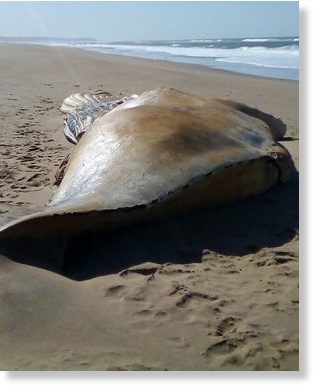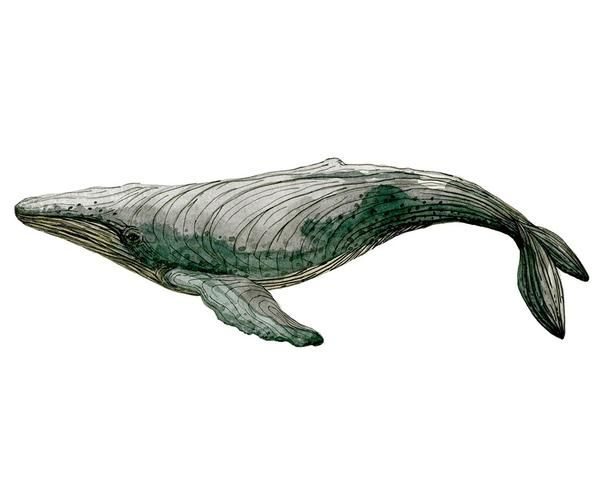Mtunzini resident Claire Campbell, who photographed the dead animal on Thursday afternoon, estimated it was about 12m long. It was found on the beach within the Umlalazi Nature Reserve.
Geremy Cliff, head of research at the KZN Sharks Board, said it was difficult to know the likely cause of death as the animal seemed to have been dead for some time.
"There is no [visible] evidence of a ship strike, so one has to assume it died of natural causes. As the population of Humpbacks is steadily increasing, there will be an associated increase in such mortalities."
Although the age of the animal was not known, he suggested it may have died of old age.
Seismic surveys

The discovery of the two dead whales over a short period on the same stretch of coast raised concern that the deaths could be related to an oil exploration survey using seismic technology, although the Sharks Board noted that an average of four to six dead whales wash up along the KZN coastline each year for a variety of reasons.
The board cautioned against assumptions that the deaths in 2016 were related to a 3D seismic exploration by a Texas-based exploration group.
Seismic surveys involve "shooting" loud underwater sound blasts to build up images of the ocean floor that may contain oil and gas reserves.
Seven years ago, the scientific committee of the International Whaling Commission cautioned that seismic surveys were a "serious concern", noting that there was an increase in humpback whale strandings along the Brazilian coastline, and evidence of grey whales fleeing their feeding grounds near Sakhalin Island during seismic surveys.
Ezemvelo KZN Wildlife marine ecologist Dr Jennifer Olbers said there had been increase in in the whale population over recent years and so an increase in whale deaths was expected.
She also said there was no evidence of a ship strike or other known offshore activities that may have caused the latest death.
During the recent World Whale Conference in Durban, whale experts reported that most whale populations around the world were bouncing back to health after the relentless slaughter of almost two million whales across the globe over the last three centuries.
Population recovery
Dr Ken Findlay, a marine biologist and chair of the Centre for Sustainable Oceans at the Cape Peninsula University of Technology, said up to 150 000 Southern Right whales had been killed by the whaling industry between 1770 and 1935, with the total number of females reduced to less than 60 worldwide by the mid-1930s.
With the banning of whale hunting during the late 1960s and early 1970s, the Southern Right whale population recovered quickly, doubling from around 7 500 in the year 2000 to around 15 000 today.
Findlay said Humpback whale populations in the Western Indian Ocean (which includes South Africa's migratory population) had also recovered quickly after the species began to enjoy protection from 1963. This sub-population has recovered to almost 15 000 individuals, almost the same level as the 1900s.
The Blue Whale - the largest whale in the world, with adults weighing in at up to 170 tons - was also on the road to recovery.
Prior to commercial whaling, Findlay said there were about 250 000 of these whales globally. They were hunted to the point of near extinction, but their numbers have recovered now to around 10 000.
Source: News24




Reader Comments
to our Newsletter